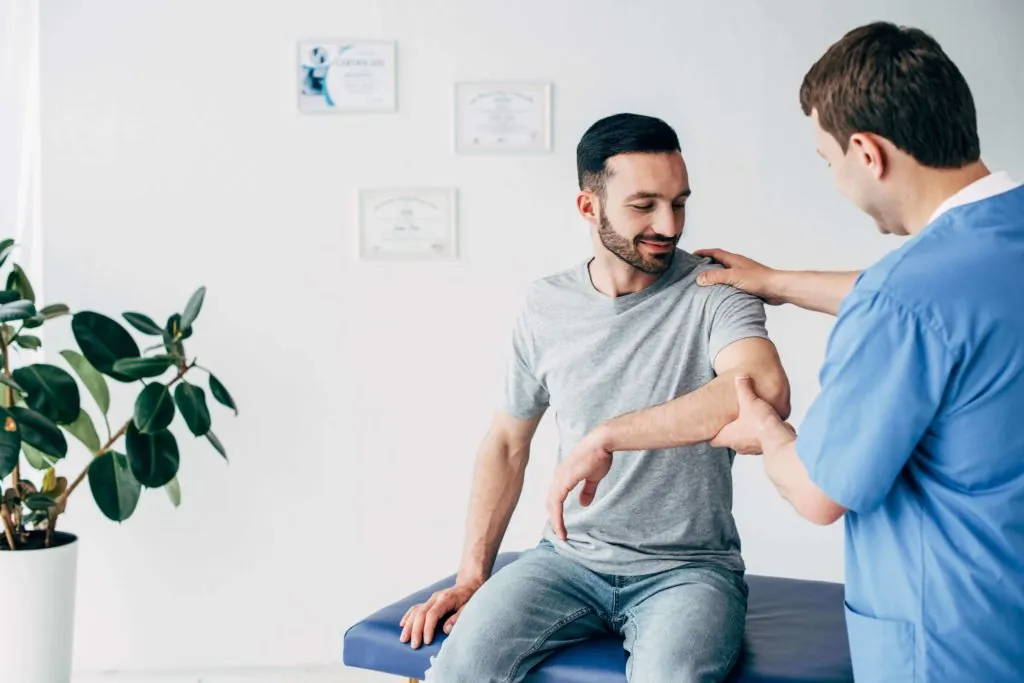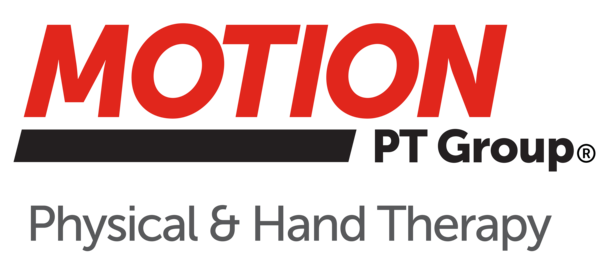
While recovery from a rotator cuff injury can take nine months or longer, you can speed up the process by diligently following the program outlined by your physical therapist (PT). By working in partnership with your PT, you may even be able to achieve full recovery within four to six months.
Each case is unique. Your rate of progress depends on such factors as the extent of the rotator cuff tear, the success of the surgical repair, and your compliance throughout your rehabilitation program.
At MOTION, our mission is “to get you back to what moves you” as quickly as possible. We appreciate how difficult it is to accomplish even the smallest of daily activities with one shoulder incapacitated. We are committed to helping you regain strength and full range of motion so you can get back to enjoying an active lifestyle.
Do I Need Surgery for My Rotator Cuff Injury?
Many rotator cuff injuries do not require surgery. If there is an injury but no tear, a physical therapy program may allow you to avoid surgery. On the other hand, if you have a torn rotator cuff, surgery, followed by physical therapy, is the common course of action. Discuss your options with your doctor.
Most surgeons use one of three surgical repair options: traditional open repair, mini-open repair, or arthroscopic repair. Patients rate all three approaches as providing the same pain relief and strength improvement, according to the American Academy of Orthopedic Surgeons.
Importance of Physical Therapy After Rotator Cuff Surgery
Physical therapy after rotator cuff surgery is crucial to regain optimum function of the shoulder. We will take you through a carefully designed treatment plan to rehabilitate and strengthen your rotator cuff and the surrounding muscles. Carefully performing only recommended movements will lessen the risk of re-tearing the rotator cuff tendon, minimize discomfort, and maximize optimum healing.
Your MOTION physical therapist will work with you to:
- Improve range of motion and circulation
- Increase strength
- Reduce swelling, stiffness, and pain
- Minimize scarring
- Achieve your functional goals with tailored exercises.
We will teach you:
- A home exercise program to continue improving strength and range of motion of rotator cuff and surrounding muscles.
- How abnormal posture can cause rotator cuff tears and how to improve your posture to reduce the risk.
- How to decrease your risk of a future rotator cuff injury.
- The correct way to carry objects safely.
Physical Therapy Protocol After Surgery
Our goal for you is a full return to your daily activities. Your recovery and strengthening program will focus not only on the rotator cuff but also on the muscles of your shoulder, neck, and upper back.
Phase One: Passive Motion
After rotator cuff surgery, you will need to keep your arm immobilized in a sling for about six weeks. To protect your repaired tendons, you must continue to use the sling most of the time, even during sleep. The only exceptions are while bathing or doing exercises recommended by your doctor or physical therapist.
Your doctor will instruct you to ice your shoulder to control swelling and reduce pain. Apply ice packs several times each day, but never for more than 20 minutes at a time.
You should only receive passive motion physical therapy during this period. This means your therapist will move your shoulder for you to avoid tension on your rotator muscles and tendons. We will also teach you how to move your shoulder without contracting rotator cuff muscles. The passive motion portion of your rehabilitation program lasts about six weeks.
During this phase, avoid any action that puts stress on your surgical arm, including:
- Reaching, pulling, or raising your arms
- Lifting or carrying objects
- Reaching behind your back or to the side
- Performing any chores or physical labor using your surgical arm
- Traveling, unless approved by your doctor
Phase Two: Active Motion without Resistance
When your shoulder tendons have healed sufficiently, you can move on to active motion. During active motion exercises, you will move your arm on your own but without added resistance.
Your MOTION physical therapist will teach you specific stretches and movement exercises designed to increase your range of motion, strengthen muscles, reduce stiffness, and improve arm control. We will teach you how to take what you learn at your physical therapy sessions home, so you can continue to strengthen your body, improve your quality of life, and get back to doing what you love quickly and safely. Clients who are diligent in practicing their home exercise program can progress quickly and enjoy a more successful long-term recovery.
This phase of active motion without added resistance lasts up to 12 weeks from your date of surgery.
Phase Three: Using Resistance to Strengthen Muscles
During this phase, you will add muscle strengthening to your exercise regimen. Decreased muscle activity can cause muscle atrophy in which they lose size and strength. Now your rotator cuff muscles and tendons have healed enough that strengthening can begin.
Your MOTION physical therapist will teach you exercises using light weights or resistance bands and gentle stretching to strengthen atrophied muscles. We will also teach you how to isolate the affected muscles so you can achieve the greatest success.
Phase Four: Return to Full Activity
Full activity means you have regained normal range of motion and strength in your surgical arm and your doctor has cleared you to return to all normal activities.
We advise our clients to continue performing strength and flexibility exercises to ensure their shoulder maintains strength and flexibility and to decrease the chance of a future injury to the area.
A Word of Caution
At some point during your rehab program, your shoulder will start to feel better, and you may be tempted to perform a movement or activity that your doctor or physical therapist has not cleared you to perform. If you put too much strain on a shoulder that is not sufficiently healed, however, you may injure the area or another part of your body.
Resisting the urge to swing the club or throw a ball can be especially challenging if you are an athlete eager to get back to your sport. If you stay on track with your physical therapy program, adding in new movements gradually as directed by your PT, you increase your chances for a full recovery.
The risk of rotator cuff injuries increases in those who perform repetitive, overhead activities. Athletes who play overhead sports like tennis, volleyball, or baseball are more prone to rotator cuff injury and may need more extensive physical therapy.
Why Choose MOTION?
Since 2015, MOTION has provided transformative physical and occupational therapy services to clients of all ages. We are also proud to offer a specialized Post-Acute COVID Recovery Program for those struggling to regain their health and vitality after suffering from COVID-19.
At MOTION, we encourage you to work in partnership with us throughout your therapy. Rehabilitating your shoulder after surgery is a long process. It is critical that you attend your PT sessions and regularly practice the home exercise program we have designed for you. By working together, we are confident you will achieve optimum healing and return to full function.
Contact us today to schedule an in-clinic or telehealth appointment.
Remember, this is not medical advice. If you have specific questions about your surgical recovery, speak to your healthcare provider.
